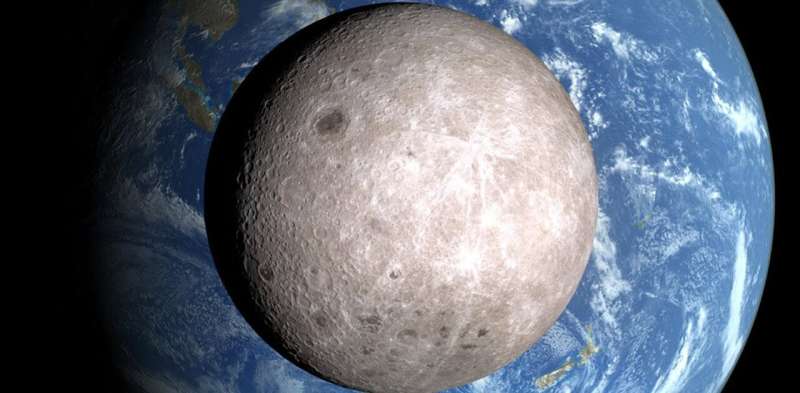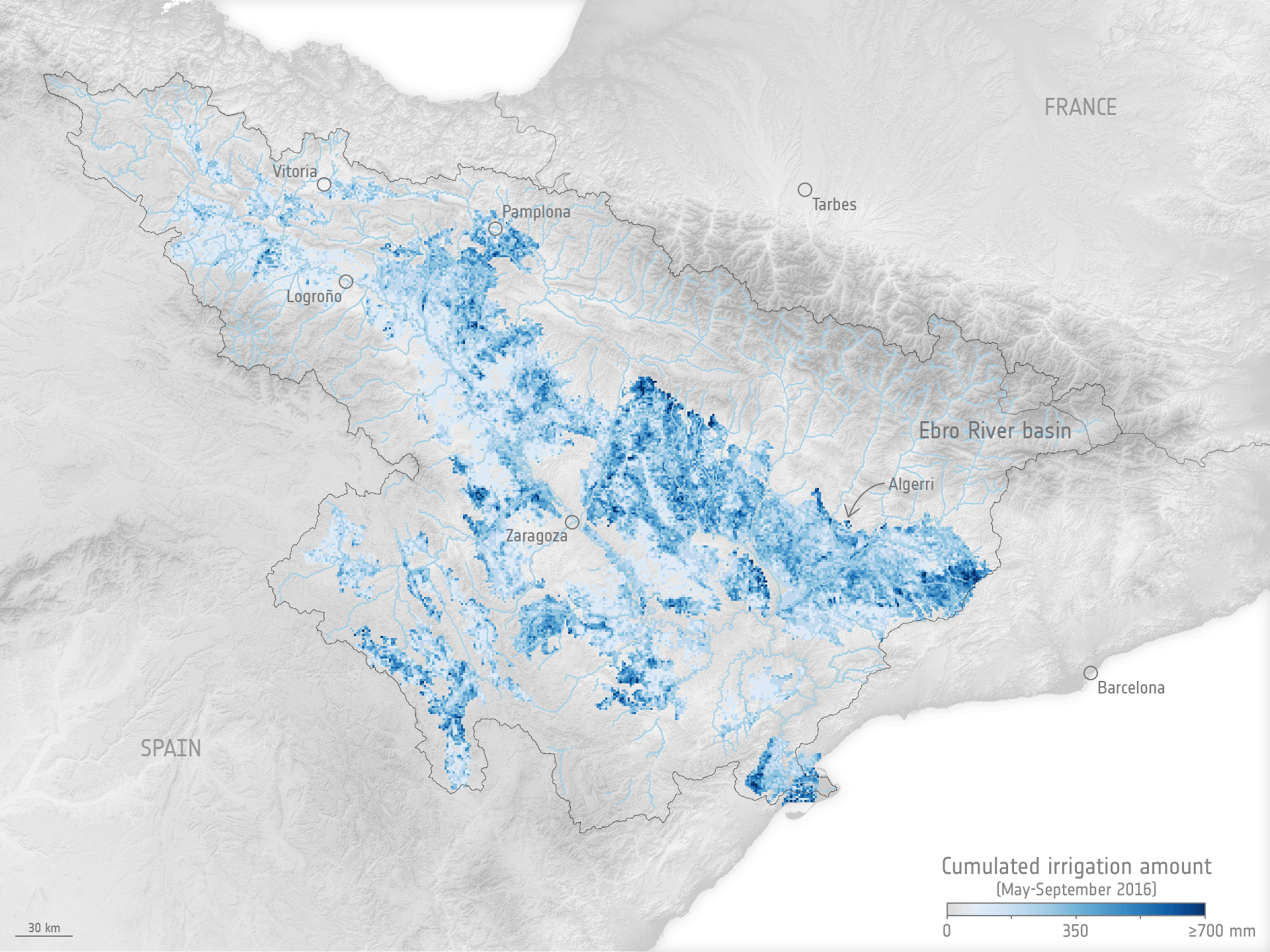Building telescopes on the moon could transform astronomy, and it's becoming an achievable goal
Wednesday, 19 April 2023 15:28
Lunar exploration is undergoing a renaissance. Dozens of missions, organized by multiple space agencies—and increasingly by commercial companies—are set to visit the moon by the end of this decade. Most of these will involve small robotic spacecraft, but NASA's ambitious Artemis program, aims to return humans to the lunar surface by the middle of the decade.
There are various reasons for all this activity, including geopolitical posturing and the search for lunar resources, such as water-ice at the lunar poles, which can be extracted and turned into hydrogen and oxygen propellant for rockets. However, science is also sure to be a major beneficiary.
The moon still has much to tell us about the origin and evolution of the solar system. It also has scientific value as a platform for observational astronomy.
Sweden intends to send ESA astronaut to the International Space Station
Wednesday, 19 April 2023 14:56Press Release N° 18–2023
At the Space Symposium in Colorado Springs, USA, on 18 April, ESA signed a letter of intent with the Swedish National Space Agency to send an ESA astronaut to visit the International Space Station on an Axiom mission.
Ukraine’s lessons for military space
Wednesday, 19 April 2023 14:54
Ongoing fighting in Ukraine continues to underscore the importance of combining military, civil and commercial space capabilities.
The post Ukraine’s lessons for military space appeared first on SpaceNews.
Aerospace CEO: More startups seek DoD work amid cash crunch
Wednesday, 19 April 2023 13:53
Aerospace Corp.’s commercial space office, established to facilitate connections between startups and government technology buyers, is seeing a surge in activity.
How much water do we use for irrigation?
Wednesday, 19 April 2023 13:04
While we know that we use more water for irrigation than for any other single purpose, watering practices are not monitored worldwide. Water needed for agriculture is expected to further increase as time goes on, so managing this precious resource as effectively as possible is imperative. Scientists have now shown that a nifty way of using information from satellites could pave the way to measuring how much water we use to irrigate, which could subsequently lead to better management.
From Galileo to the Lunar Gateway: Mapping Italy’s Growing Space Industry
Wednesday, 19 April 2023 11:19
Today, Italy plays a vital role in space missions and activities worldwide, far more so than is often acknowledged.
Will the Earth last forever
Wednesday, 19 April 2023 10:56 Everything that has a beginning has an end. But the Earth will last for a very long time, and its end will come billions of years after anyone who is alive here now is gone.
Before we talk about the future of our planet, let's review its history and when life appeared on it. The history of human beings is very, very short compared with that of Earth.
b>4 billion years old br> /b>
O
Everything that has a beginning has an end. But the Earth will last for a very long time, and its end will come billions of years after anyone who is alive here now is gone.
Before we talk about the future of our planet, let's review its history and when life appeared on it. The history of human beings is very, very short compared with that of Earth.
b>4 billion years old br> /b>
O Rocket Lab introduces suborbital testbed rocket, selected for hypersonic test flights
Wednesday, 19 April 2023 10:56 Rocket Lab USA, Inc (Nasdaq: RKLB) has formally introduced the HASTE rocket (Hypersonic Accelerator Suborbital Test Electron), a suborbital testbed launch vehicle derived from Rocket Lab's heritage Electron rocket. HASTE provides reliable, high-cadence flight test opportunities needed to advance hypersonic system technology development, with the inaugural launch scheduled to take place in the fi
Rocket Lab USA, Inc (Nasdaq: RKLB) has formally introduced the HASTE rocket (Hypersonic Accelerator Suborbital Test Electron), a suborbital testbed launch vehicle derived from Rocket Lab's heritage Electron rocket. HASTE provides reliable, high-cadence flight test opportunities needed to advance hypersonic system technology development, with the inaugural launch scheduled to take place in the fi How did Earth get its water
Wednesday, 19 April 2023 10:56 Our planet's water could have originated from interactions between the hydrogen-rich atmospheres and magma oceans of the planetary embryos that comprised Earth's formative years, according to new work from Carnegie Science's Anat Shahar and UCLA's Edward Young and Hilke Schlichting. Their findings, which could explain the origins of Earth's signature features, are published in Nature.
For
Our planet's water could have originated from interactions between the hydrogen-rich atmospheres and magma oceans of the planetary embryos that comprised Earth's formative years, according to new work from Carnegie Science's Anat Shahar and UCLA's Edward Young and Hilke Schlichting. Their findings, which could explain the origins of Earth's signature features, are published in Nature.
For Clouds Above, Contact Science Below: Sols 3800-3802
Wednesday, 19 April 2023 10:56 Here in Toronto, the weather feels like summer. But in Gale Crater it's coming towards the end of Autumn. At this time of year, we enter Aphelion Cloud Belt season, when we see regular formation of water-ice clouds. While not as striking as the twilight clouds earlier in the year, these clouds form every Mars year at around the same time and last for many months, making this the perfect opportun
Here in Toronto, the weather feels like summer. But in Gale Crater it's coming towards the end of Autumn. At this time of year, we enter Aphelion Cloud Belt season, when we see regular formation of water-ice clouds. While not as striking as the twilight clouds earlier in the year, these clouds form every Mars year at around the same time and last for many months, making this the perfect opportun NASA satellite's elusive green lasers spotted at work
Wednesday, 19 April 2023 10:56 The green light streaking across the cloudy sky was something that Daichi Fujii had never seen before. The museum curator's motion-detecting cameras were set up near Japan's Mount Fuji to capture meteors, allowing him to calculate their position, brightness, and orbit. But the bright green lines that appeared on a video taken Sept. 16, 2022, were a mystery.
Then Fujii looked closer. The be
The green light streaking across the cloudy sky was something that Daichi Fujii had never seen before. The museum curator's motion-detecting cameras were set up near Japan's Mount Fuji to capture meteors, allowing him to calculate their position, brightness, and orbit. But the bright green lines that appeared on a video taken Sept. 16, 2022, were a mystery.
Then Fujii looked closer. The be India approves construction of its own LIGO
Wednesday, 19 April 2023 10:56 The Indian government has granted the final approvals necessary for construction to begin on LIGO-India, a nearly identical version of the twin LIGO (Laser Interferometer Gravitational-Wave Observatory) facilities that made history after making the first direct detection of ripples in space and time known as gravitational wavesin 2015. The Indian government will spend about $320 million to build
The Indian government has granted the final approvals necessary for construction to begin on LIGO-India, a nearly identical version of the twin LIGO (Laser Interferometer Gravitational-Wave Observatory) facilities that made history after making the first direct detection of ripples in space and time known as gravitational wavesin 2015. The Indian government will spend about $320 million to build Space Force "Simple Formula to Go Fast in Space Acquisition"
Wednesday, 19 April 2023 10:56 Honorable Frank Calvelli, Assistant Secretary of the Air Force for Space Acquisition and Integration, released a memorandum April 5, outlining the U.S. Space Force's plan to transform its architecture to a more proliferated and resilient form.
"Today our space systems are increasingly under threat," Calvelli said. "Strategic competitors want to deny our advantage in space during a potentia
Honorable Frank Calvelli, Assistant Secretary of the Air Force for Space Acquisition and Integration, released a memorandum April 5, outlining the U.S. Space Force's plan to transform its architecture to a more proliferated and resilient form.
"Today our space systems are increasingly under threat," Calvelli said. "Strategic competitors want to deny our advantage in space during a potentia SwRI joins new NASA institute to qualify, certify additive manufacturing methods
Wednesday, 19 April 2023 10:56 Southwest Research Institute will contribute to a new NASA institute to improve understanding and enable rapid certification of metal parts created using advanced additive manufacturing (AM) techniques. The Institute for Model-based Qualification and Certification of Additive Manufacturing (IMQCAM) will work to improve computer models of additively manufactured metal parts and expand their utili
Southwest Research Institute will contribute to a new NASA institute to improve understanding and enable rapid certification of metal parts created using advanced additive manufacturing (AM) techniques. The Institute for Model-based Qualification and Certification of Additive Manufacturing (IMQCAM) will work to improve computer models of additively manufactured metal parts and expand their utili Musk says he is out to create 'truth-seeking' AI
Wednesday, 19 April 2023 10:56 Elon Musk is out to counter Microsoft and Google artificial intelligence efforts with "truth-seeking AI" that shuns political correctness, he said during an interview aired late Monday.
The billionaire boss of Twitter and Tesla voiced anew his concerns about the danger of AI, saying it has "the potential of civilizational destruction."
He said he was also worried that the ChatGPT bot cre
Elon Musk is out to counter Microsoft and Google artificial intelligence efforts with "truth-seeking AI" that shuns political correctness, he said during an interview aired late Monday.
The billionaire boss of Twitter and Tesla voiced anew his concerns about the danger of AI, saying it has "the potential of civilizational destruction."
He said he was also worried that the ChatGPT bot cre 
